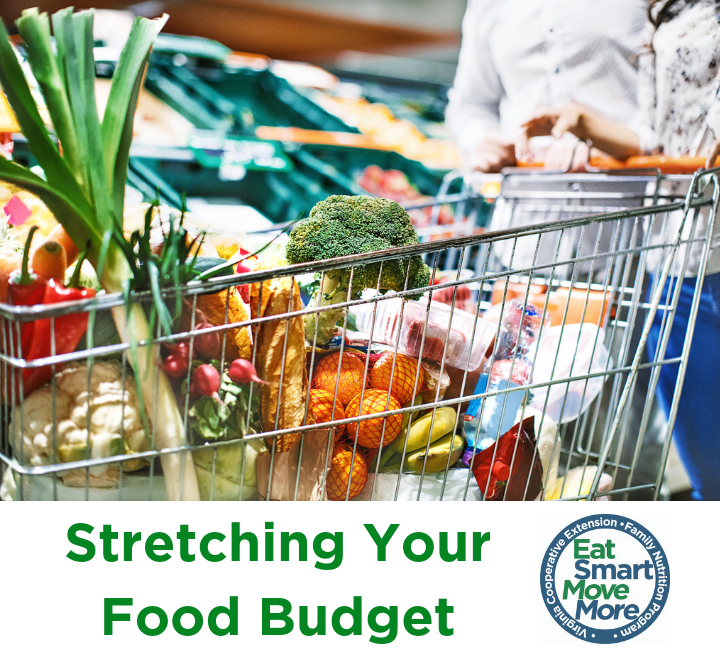A large part of any household’s budget is spent on food. Many people believe that healthy foods are expensive, but it is possible to eat smart on a budget. The United States Department of Agriculture (USDA) monitors food prices and calculates how much it costs to eat like MyPlate. SNAP benefits are calculated using this information (along with household income and other factors). For a family of four (2 adults, 2 kids under 5), it takes about $130 a week or $562 a month to meet your nutrient needs. This will buy you items from each group of MyPlate, along with seasonings, cooking oils, etc. to create three balanced meals plus snacks and beverages each day. So how did USDA balance meeting nutrient needs with cost in their calculations?
Strategies to Cut Food Costs
Cook from scratch. Most foods in the USDA plan are unprocessed, for example buying whole potatoes instead of instant potato flakes and dry noodles instead of flavored noodle dishes. Cooking more at home saves money and makes it easier to eat smart.
Choose low-cost produce. Fresh fruits and veggies can be expensive, especially if out of season. The USDA used mostly low-cost fruits and veggies to meet the requirements. Potatoes, carrots, leafy greens, cabbage, corn, tomatoes, peppers, apples, bananas, raisins, and orange juice are the most affordable produce options.
Cut out the extras. To stay on budget while eating like MyPlate, there is no room for low nutrition foods. Stick with water or low-fat milk to drink (and a small amount of juice) and skip soda or energy drinks. Unsweetened tea and coffee are fine nutritionally, but can cost more than tap water, so budget these wisely. Snack on MyPlate-friendly foods, like fruits, veggies, and whole grains (crackers, popcorn, etc.), instead of chips, candy, or ice cream.
Know your nutrient needs. Portion sizes have gotten larger over time and we aren’t used to what the right size for our needs look like without a little help. MyPlate has great resources for calculating the right amount of each food group you need to be healthy. Use these plans as a guide for how much of each food group your family will need each day as you plan your meals. And if you cook too much at one meal, save your leftovers and don’t let them go to waste.
Plan a mix of higher and lower cost meals. Meals with animal proteins and seafood tend to be more expensive, so plan a few meatless meals to balance it out. This list is a good starting point for low-cost ingredients to base your meals around. FYI, you can search by ingredient(s) on our recipe site to find ideas for cooking with different low-cost foods.

Here are some quick and easy ideas for low-cost meals to stretch your food dollar.
- Peanut Butter and Banana Sandwich on Wheat with carrot sticks and a glass of milk (estimated cost: $0.96 per serving)
- Beans and Rice topped with shredded cheese served with frozen okra and canned pears (estimated cost: $1.15 per serving)
- Whole wheat pasta with cannellini beans, canned tomatoes, frozen spinach, and parmesan cheese served with apple slices (estimated cost: $1.65 per serving)
These tips will help you make the best choice when shopping on a budget. We have more tips on our website, too. If you have any questions or would like some specific advice, feel free to comment or message us!

